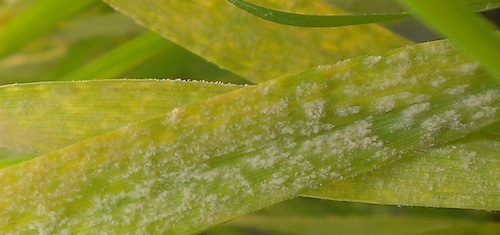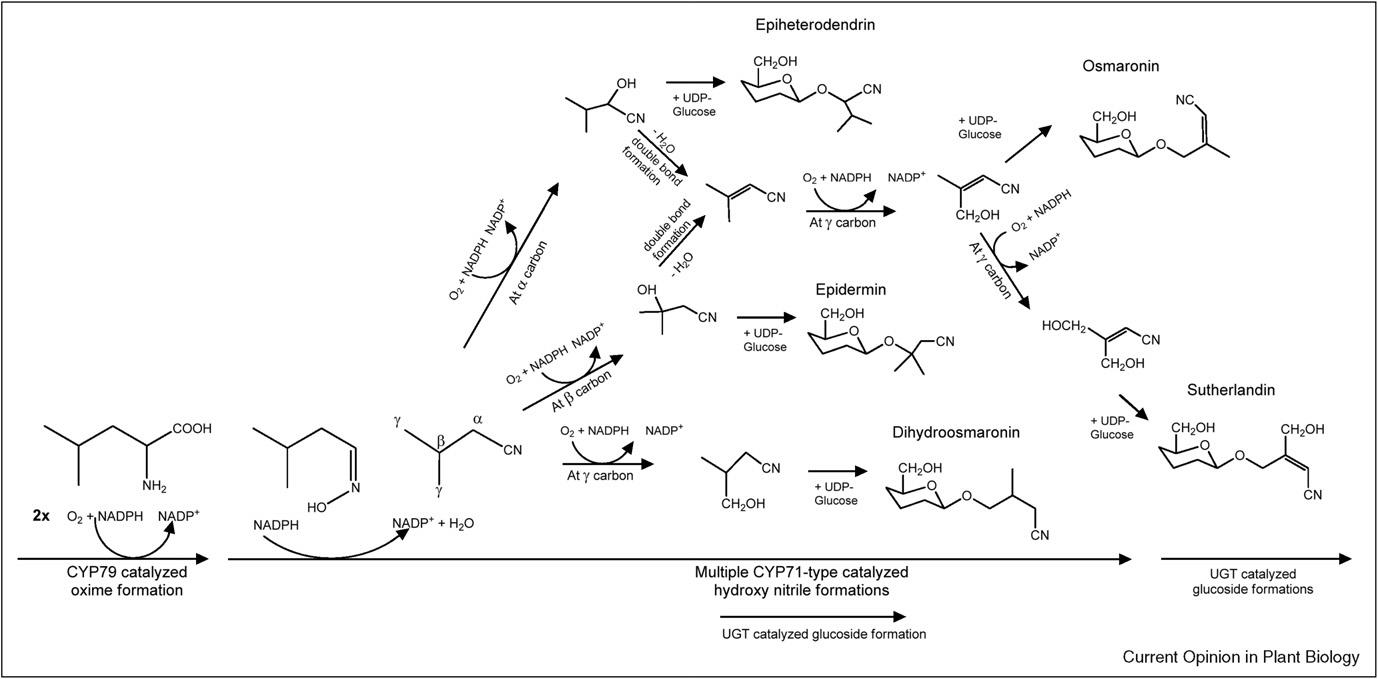
Insects and microorganisms play a big role in the life of plants - both as pollinating agents (bees) and as herbivorous enemies (fungi and insects). This subproject aims to shed light on the strategies by which plants communicate with their surroundings using bioactive natural compounds such as cyanogenic glucosides.
In barley, hydroxynitrile glucosides are restricted to the leaf tissues and account for 90% of the soluble carbohydrates present within the epidermal cells. The barley powdery mildew (Blumeria graminis f.sp. hordei) is specialized to infect only the epidermal cell layer of the barley leaf, that is, the cell type where the hydroxynitrile glucosides are stored. As an obligate biotroph, the powdery mildew fungus nourishes specifically from the living host epidermal cells suggesting that the fungus has been able to adapt to and overcome the hydroxynitrile glucoside based defence system in barley. Most likely, the pathogen has adapted to use the plant defense compounds as its nutrients!
To investigate the possible role of hydroxynitrile glucoside in the barley- powdery mildew interaction, we are studying barley lines with high, medium and low content of these compounds. Additionally, we have established transient and stable barley transformation systems and are characterizing CYP79 RNAi lines. Transgenic barley plants with altered production of hydroxynitrile glucosides are being tested for susceptibility to powdery mildew in order to determine the importance of hydroxynitrile glucosides as recognition factors and feeding substrates for the fungus. Putative hydroxynitrile glucoside biosynthetic genes are being tested by heterologous transient expression in Nicotiana benthamiana. We are also investigating a barley wax mutant population for changed content of the hydroxynitrile glucosides in the epicuticular wax layer to learn about transport and possible identification of transporters and are studying how barley hydroxynitrile glucoside levels are regulated by both CO2 and temperature levels. This will provide valuable information on how the content of bio-active natural products in plants may be expected to change following envisioned climate changes. For example, in some cases this may result in harvest of more healthy food plants, in other cases in formation of toxins we would rather not ingest.

Proposed biosynthetic pathways for hydroxynitrile glucosides in barley, where epiheterodendrin is the only cyanide releasing hydroxynitrile glucoside formed. Click for larger image.
Return to Plant Plasticity front page
Principal Investigator
 Kirsten Jørgensen
Kirsten Jørgensen
kij@plen.ku.dk
+45 3533 3346
